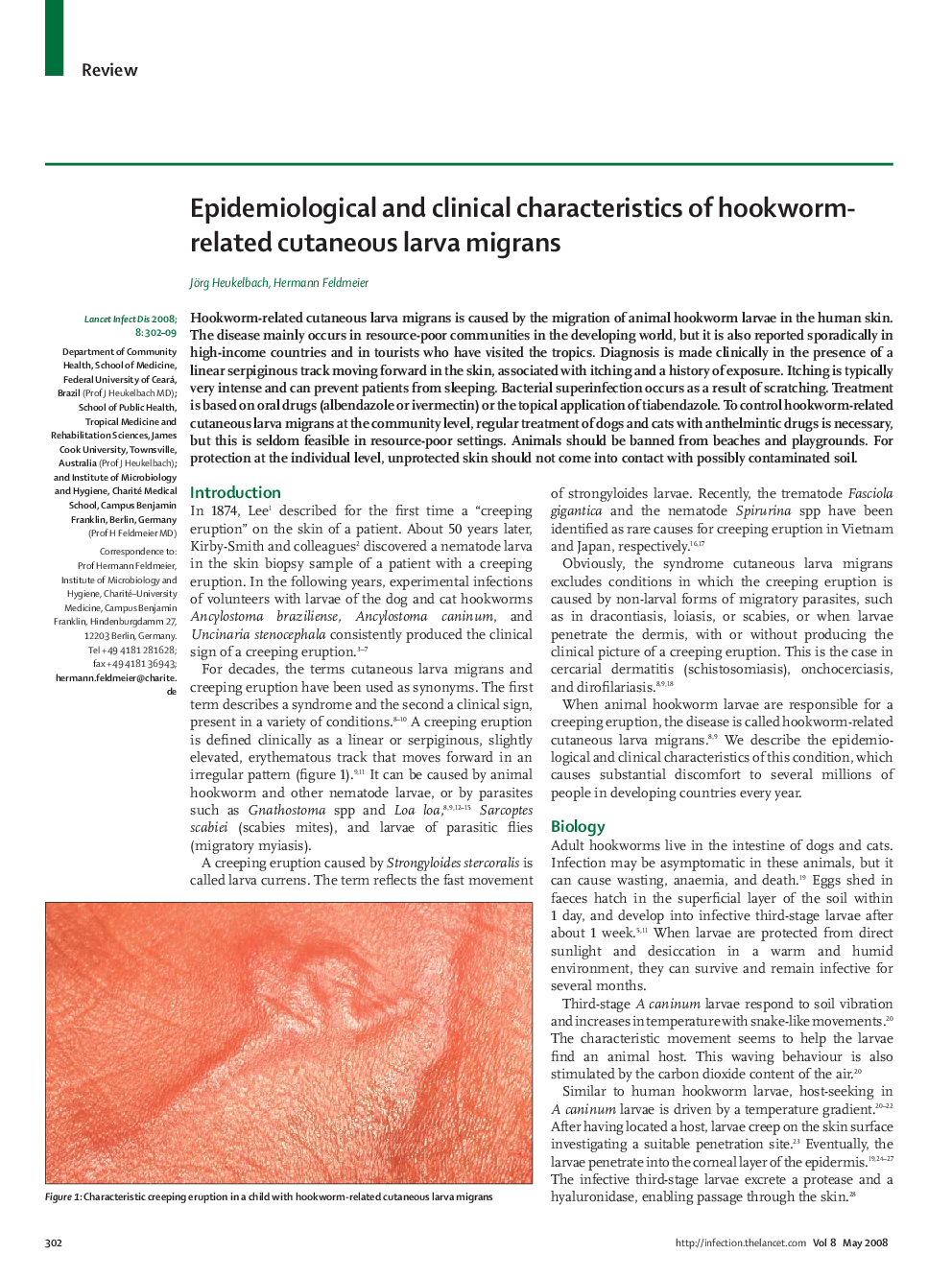| Article ID | Journal | Published Year | Pages | File Type |
|---|---|---|---|---|
| 3412078 | The Lancet Infectious Diseases | 2008 | 8 Pages |
SummaryHookworm-related cutaneous larva migrans is caused by the migration of animal hookworm larvae in the human skin. The disease mainly occurs in resource-poor communities in the developing world, but it is also reported sporadically in high-income countries and in tourists who have visited the tropics. Diagnosis is made clinically in the presence of a linear serpiginous track moving forward in the skin, associated with itching and a history of exposure. Itching is typically very intense and can prevent patients from sleeping. Bacterial superinfection occurs as a result of scratching. Treatment is based on oral drugs (albendazole or ivermectin) or the topical application of tiabendazole. To control hookworm-related cutaneous larva migrans at the community level, regular treatment of dogs and cats with anthelmintic drugs is necessary, but this is seldom feasible in resource-poor settings. Animals should be banned from beaches and playgrounds. For protection at the individual level, unprotected skin should not come into contact with possibly contaminated soil.
